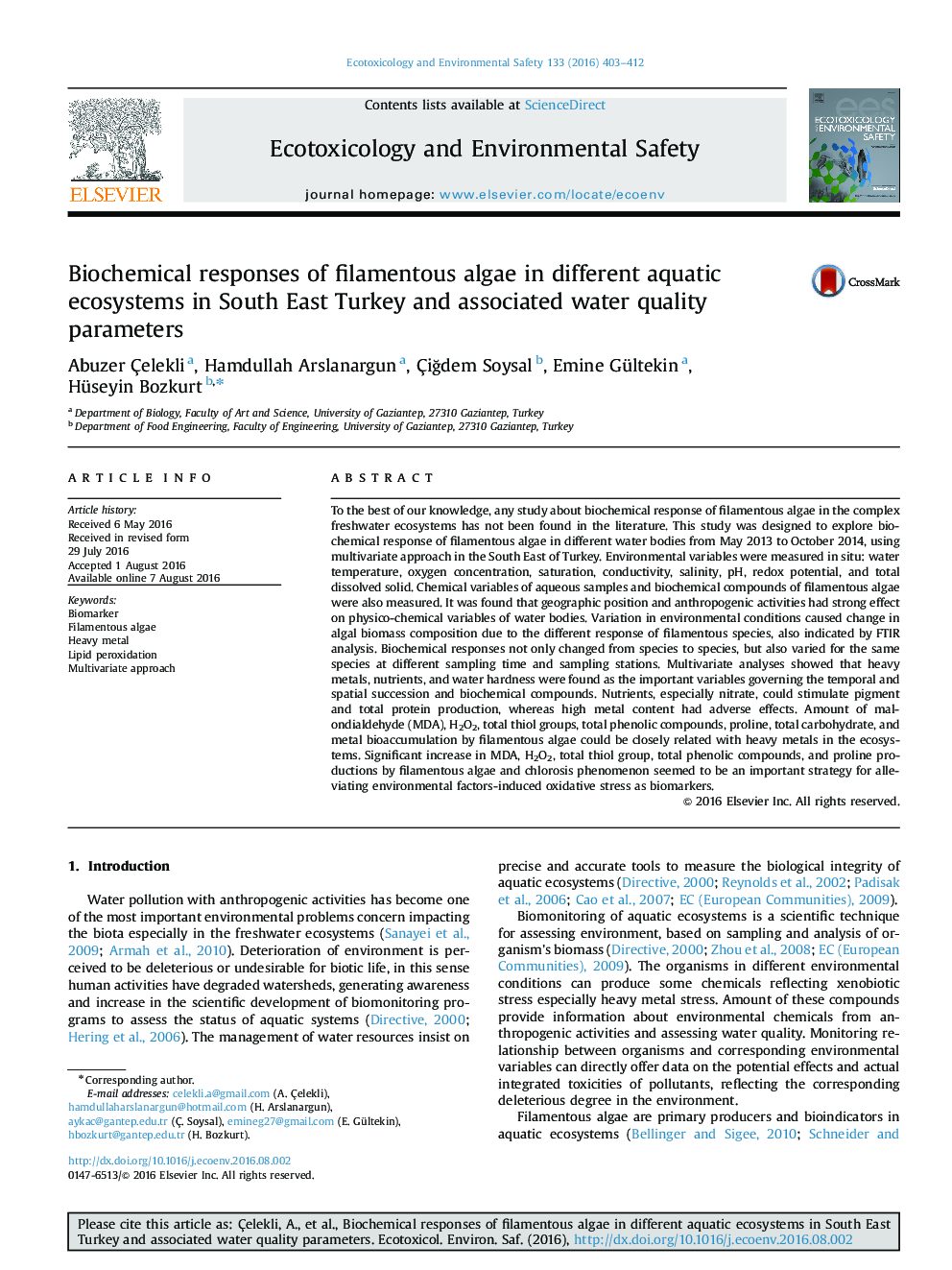| کد مقاله | کد نشریه | سال انتشار | مقاله انگلیسی | نسخه تمام متن |
|---|---|---|---|---|
| 4419023 | 1618930 | 2016 | 10 صفحه PDF | دانلود رایگان |
• The first attempt to explore biochemical response of filamentous algae in various water bodies.
• Heavy metals and nutrients were found be the most important variables, indicated by CCA.
• Environmental conditions caused to change in algal biomass, discovered by FTIR analysis.
• Biochemical response of filamentous algae could to be used as natural biomarkers.
To the best of our knowledge, any study about biochemical response of filamentous algae in the complex freshwater ecosystems has not been found in the literature. This study was designed to explore biochemical response of filamentous algae in different water bodies from May 2013 to October 2014, using multivariate approach in the South East of Turkey. Environmental variables were measured in situ: water temperature, oxygen concentration, saturation, conductivity, salinity, pH, redox potential, and total dissolved solid. Chemical variables of aqueous samples and biochemical compounds of filamentous algae were also measured. It was found that geographic position and anthropogenic activities had strong effect on physico-chemical variables of water bodies. Variation in environmental conditions caused change in algal biomass composition due to the different response of filamentous species, also indicated by FTIR analysis. Biochemical responses not only changed from species to species, but also varied for the same species at different sampling time and sampling stations. Multivariate analyses showed that heavy metals, nutrients, and water hardness were found as the important variables governing the temporal and spatial succession and biochemical compounds. Nutrients, especially nitrate, could stimulate pigment and total protein production, whereas high metal content had adverse effects. Amount of malondialdehyde (MDA), H2O2, total thiol groups, total phenolic compounds, proline, total carbohydrate, and metal bioaccumulation by filamentous algae could be closely related with heavy metals in the ecosystems. Significant increase in MDA, H2O2, total thiol group, total phenolic compounds, and proline productions by filamentous algae and chlorosis phenomenon seemed to be an important strategy for alleviating environmental factors-induced oxidative stress as biomarkers.
Journal: Ecotoxicology and Environmental Safety - Volume 133, November 2016, Pages 403–412
